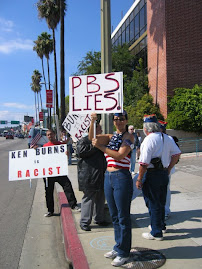Prompted by a spike in homicides, in March of 2004 the Oxnard Police Department and the Ventura County District Attorney’s Office embarked upon a public relations campaign that terrified the bejeezers out of residents to support its debut of a civil gang injunction. In their showcase of the criteria and putative effectiveness of this law enforcement tool, the two agencies interspersed within their PowerPoint presentation graphic portrayals of menacing, tattooed, Mexican-origin street gang members complemented by sanguineous crime scenes.
As Oxnard Police Chief Art Lopez introduced the injunction to Oxnard residents with bombast, I recoiled as I knew that his campaign to juice the powers of his department embodied the potential to unleash the wanton prosecution, if not persecution, of young brown people.
As a result, I joined a cadre of concerned Ventura County residents that evolved into the formation of Chiques Organizing for Rights and Education (CORE)—an acronym that channeled the civil rights era spirit of the Congress of Racial Equality.
Within the Mexican-origin community, Chiques serves as a cultural epithet for Oxnard. After a brief discussion, we agreed to embrace the Chiques moniker to take back control how the city, in general, and its Mexican-origin community, in particular, was defined by its police department and the DA.
Since the start, CORE, wary of expanded police powers, doubted the constitutionality of the initially proposed injunction against the Colonia Chiques street gang. And over time, a select and fluctuating number of educators, students, Colonia residents, and social workers worked under the CORE name not only to challenge the necessity of this blunt instrument but also petitioned city and county officials for alternative initiatives of prevention and rehabilitation.
Throughout the 14-year history of the City of Oxnard’s two civil gang injunctions (the second against Southside Chiques), I have asked myself why I oppose this law enforcement device. I, like most, if not all, people am for public safety so that my community thrives, especially its youth.
As I recognize the multifaceted, and often perilous, service police officers perform to ensure community peace and safety, I also hold an informed skepticism toward the general impartiality of law enforcement agencies toward the poor and people of color.
The Sleepy Lagoon case of 1942, that entailed the Los Angeles Police Department’s mass arrest of 500 young Mexican Americans, predominantly, who fashioned the era’s zoot suit for the mysterious death of one person, provides one such lesson.
In April of 2006, Lopez’s successor, Police Chief John Crombach, validated my instincts when he publicly bemoaned his department’s gratuitous use of force with the injunction’s implementation like an “invading army in the community.” When I listened to Chief Crombach’s extraordinary admission first hand at a Cal Lutheran University forum in which I was a participant, along with a DA representative, I imagined stormtrooper-like tactics of harassment, the front doors of homes kicked in, and a general abuse of power such as I have studied as a historian in the archives of California.
In fact, CORE listened to such testimonies from Colonia residents as the OPD and DA premiered its injunction. So, I serve as a conduit of their perspective.
These are just a sample of the reasons for my continued opposition to the civil gang injunctions. Others involve the City of Oxnard’s disproportionate allocation of resources to police suppression over independent community-based programs such as the KEYS Leadership Academy that provides proven transformative support for troubled young men and women.
Therefore, I do not favor street gang activity in no shape or form; I support sound, constitutional policing as well as an engaged citizenry that debates the policies of city officials.
Indeed, the OPD, to its credit, admitted to the city council on December 18th, 2018 that CORE’s critique of the gang injunctions influenced its decision to amend this tool to protect the rights of the innocent while ensuring public safety. This resulted in the opportunity for enjoined persons, and those to be served in the future, to challenge with greater ease their identification as active gang members of Colonia or Southside Chiques in and out of court.
Hence, recent judicial rulings deeming injunctions unconstitutional due to their violation of the due process rights of enjoined persons, impelled the OPD to stop the enforcement of its injunctions, amend them, and reduce the number served from an original 1,000 plus people, to 362 earlier this year, to presently some 24 individuals.
While dialogue between the OPD and CORE continues, a recent police department survey that purports the community’s support for the injunctions at over 90% similarly begs interrogation. Only in totalitarian states such as North Korea, or with such unscientific assessments, can such a high approval rate be alleged.
As in the presentation of suspect data for the implementation of the initial injunction in 2004, such statistical sleight-of-hand undermines extant trust among residents.
Furthermore, wariness manifest in contradictions between stated promises of the OPD and its actions. One that stands out in my mind was the department’s promise to the community early in this tale that juveniles would not be served with the injunction. Another consist in the assertion that the injunction, under civil law, would not impinge on the right of those served to enjoy legal representation by a public defender as is the case under criminal law. In both cases, the OPD vacillated in words and deeds.
So as the city council continues to support the OPD’s continued civil gang injunction strategy, it must adopt the novel tool of the Youth Justice Coalition: LA For Youth-1% Campaign that calls for one percent of Los Angeles County’s law enforcement budget to be dedicated to prevention and rehabilitation programs. In the City of Oxnard, a 1% Campaign would translate to $580,000 out of a $58 million OPD general fund budget. Imagine the safer Oxnard this fiscal tool could bring.
C/S
fpb
Amigos 805 LatinoLA
Saturday, January 12, 2019
Subscribe to:
Comments (Atom)




